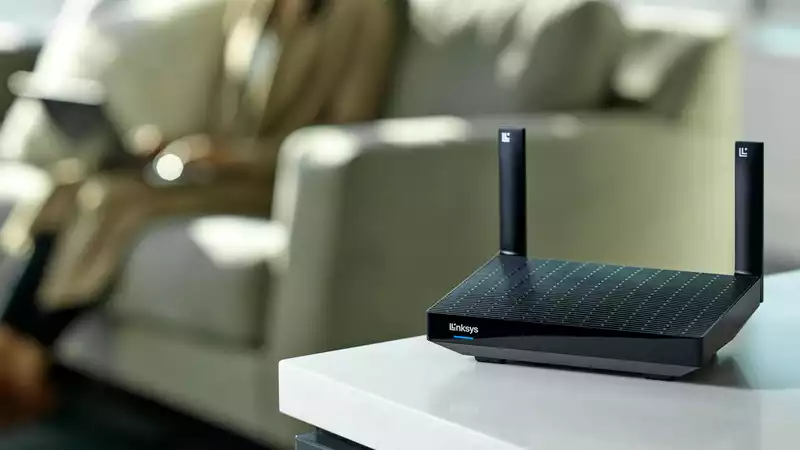At CES 2022, some of the world's leading network gear manufacturers, including Linksys, Netgear, and TP-Link, showcased new products. The trend is clearly toward more Wi-Fi 6e routers that can take advantage of the newly opened 6 GHz band. [However, most consumer devices these days only support regular Wi-Fi 6, so there are still new routers that do not support 6e. (3]
We have seen mesh routers, gaming routers, and those that bridge the gap between the two styles. But our favorite is a unique gaming router whose antenna twists and turns on a mechanical arm, making it ideal for focusing the signal on devices moving around the house; whether it will appear on the best Wi-Fi 6 routers page remains to be seen.
The TP-Link Archer AXE200 Omni remains to be seen. The four rounded antennas seem to be alive, folding and twisting to optimize wireless connectivity with specific devices in the house. The wired connectivity aspect is also quite impressive, with one Ethernet port capable of 10 Gbps throughput (out of a total of six) to deliver large data streams to virtual reality and 8K video devices.
Like all of TP-Link's top-of-the-line routers, the Archer AXE200 Omni comes with a free version of the company's HomeShield software, which provides security protection and parental controls. (It can also be added to an existing TP-Link mesh network; the TP-Link Archer AXE200 Omni will be available later this year at a price to be determined.
In the tradition of gaming routers that look like Darth Vader's spaceship, the Netgear Nighthawk RAXE300 has swooping black wings that look ready to raid rebel bases with laser fire. In fact, it blankets the house with Wi-Fi 6e signals, transferring up to 7.8 Gbps of data at a time, according to Netgear. Of course, under optimal conditions, that house can be up to 2,500 square feet.
The RAXE300 is a cheaper version of the Netgear Nighthawk RAXE500, which was released in mid-2021 ($399 instead of $599) and remains one of the fastest routers on the planet; the RAXE300 has six antennas (compared to the RAXE500's eight) ( hidden in the bat's wings), the more expensive model has a theoretical throughput of up to 10.8 Gbps. In practice, however, most people who happen to have a Wi-Fi 6e-enabled device at home will be more than satisfied with the RAXE300, which Netgear has announced will be available by the end of March.
Many Wi-Fi 6 routers sell for over $300, but Linksys is trying to undercut that with an affordable (MSRP $299) model: the Linksys Hydra Pro 6 offers up to 5.4 Gbps throughput and can connect as many as 30 devices at once in an area of up to 2,700 square feet. It can also be added to a Linksys mesh network.
On the back are four Gigabit Ethernet ports for wired devices and a fifth port for modems, plus a USB 3.0 port. Like other new Linksys models, the Hydra Pro 6 comes with parental controls, supports the WPA3 encryption standard, and can be managed via a smartphone app. It is currently available on the Linksys website and will soon be available at major retailers.
TP-Link's other new gaming router was a bit more traditional, if you can consider a mechanical evil spider on your back normal; the Archer AXE300 is a high-end Wi-Fi 6e gaming router with eight antennas and four bands, delivering over 15 Gbps (theoretically).
On the wired side, there are a whopping seven Ethernet ports, two of which provide 10 Gbps of throughput and a third provides 2.5 Gbps; there is also an SFP+ port that works with one of the 10 Gbps Ethernet ports. Like the Archer AXE200 Omni, the Archer AXE300 can be integrated into a mesh network, comes with HomeShield, and will be available later this year at a price yet to be determined.
Finally, TP-Link introduced the Deco XE200. This is a Wi-Fi 6e mesh system that promises to provide up to 11 Gbps throughput over 6,500 square feet with a single base station and satellite. The units are white, tapered cylinders with translucent tops, looking more like small air purifiers than alien spacecraft.
Each has a 10 Gbps Ethernet port, complemented by two gigabit ports, but there appears to be no USB port. Like the other TP-Link models already mentioned, this system comes with HomeShield, which is expected to be available later this year, though pricing has not yet been determined.
.









Comments